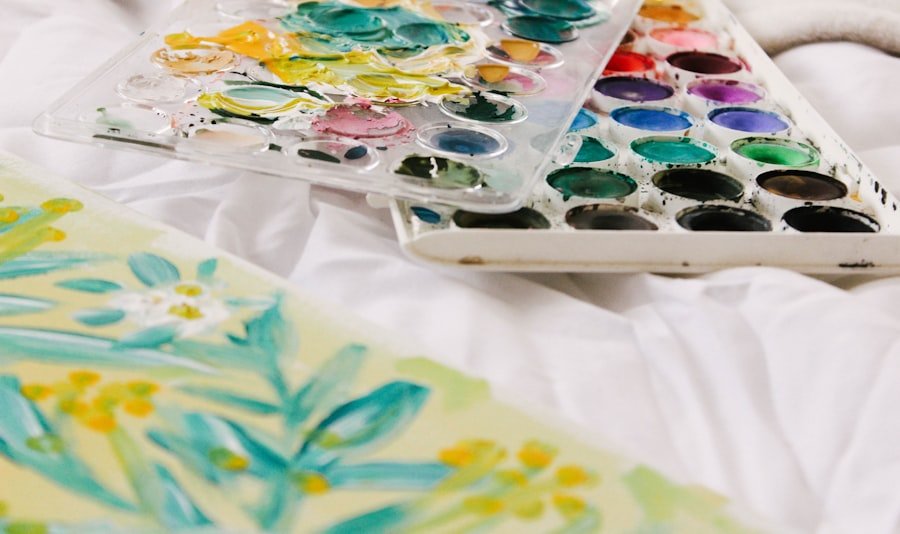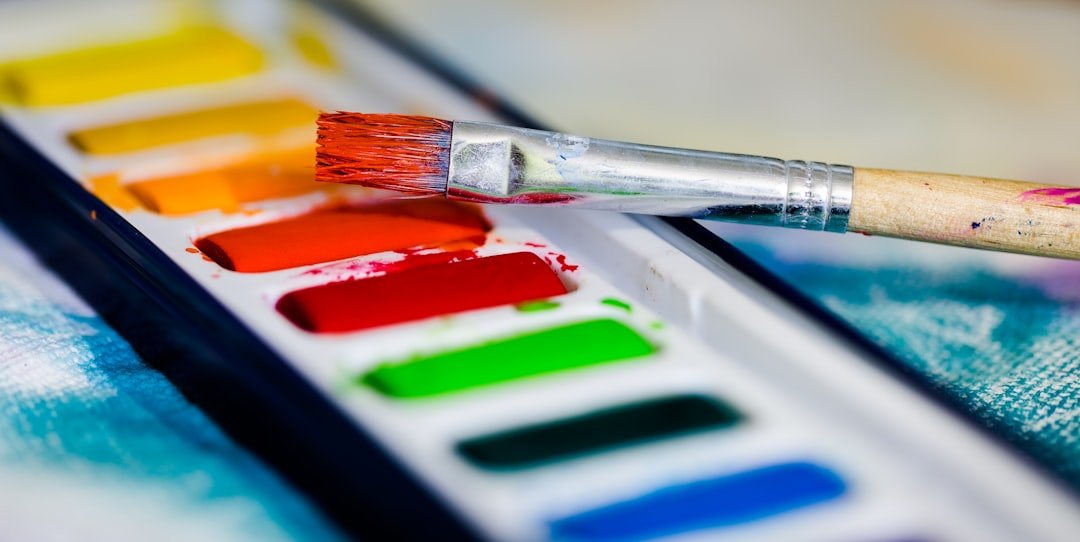This post may contain affiliate links. When you purchase through links on our site, we may earn an affiliate commission.
In an increasingly fast-paced world, stress has become a common companion for many individuals. The demands of work, family, and social obligations can create a whirlwind of anxiety that often feels overwhelming. In this context, creative arts have emerged as a powerful antidote to stress, offering individuals a means to express themselves and find solace in the act of creation.
Engaging in creative activities can serve as a therapeutic outlet, allowing people to channel their emotions into something tangible and meaningful. Whether through painting, music, writing, or other forms of artistic expression, the creative process can provide a much-needed respite from the pressures of daily life. The therapeutic potential of creative arts lies not only in the act of creation itself but also in the emotional release it facilitates.
When individuals immerse themselves in creative endeavors, they often experience a shift in focus that allows them to momentarily escape their worries. This diversion can lead to a reduction in stress levels and an increase in overall well-being. As research continues to unveil the psychological benefits of creative expression, more people are turning to the arts as a viable solution for managing stress and enhancing their mental health.
Key Takeaways
- Engaging in creative arts can be an effective and enjoyable way to relieve stress and improve mental well-being.
- Creative arts such as painting, music, writing, and other forms can provide a range of benefits for stress relief, including relaxation, self-expression, and mindfulness.
- Creative arts can help manage and reduce stress levels by providing a healthy outlet for emotions, promoting a sense of accomplishment, and fostering a positive mindset.
- Tips for incorporating creative arts into your stress relief routine include setting aside dedicated time, experimenting with different forms of creative expression, and seeking inspiration from others.
- Real-life success stories demonstrate the powerful impact of creative arts in managing stress, inspiring others to explore and embrace these activities for their own well-being.
The Benefits of Engaging in Creative Arts for Stress Relief
The Power of Flow
When individuals engage in artistic activities, they often enter a state of flow—a mental state characterized by complete absorption in the task at hand. This immersion can lead to a reduction in negative thoughts and anxiety, as the mind becomes focused on the present moment rather than dwelling on past regrets or future worries.
Self-Expression and Emotional Release
Many people find it challenging to communicate their emotions, especially when faced with stress or trauma. Artistic expression allows individuals to convey complex feelings through visual imagery, sound, or written word, offering a sense of relief and validation. This form of expression can be cathartic, enabling individuals to process their emotions and experiences in a safe and constructive manner.
Grounding and Mindfulness
The act of creating art encourages individuals to be fully present, which can be incredibly grounding during times of stress. Moreover, creative arts provide an avenue for self-expression that can be particularly beneficial for those who struggle to articulate their feelings verbally.
Exploring Different Forms of Creative Arts for Stress Relief

The realm of creative arts is vast and varied, encompassing numerous forms that cater to different preferences and talents. Painting is one of the most accessible forms of artistic expression, allowing individuals to explore color, texture, and form without the constraints of traditional techniques. Whether using watercolors, acrylics, or oils, the act of putting brush to canvas can be incredibly liberating.
Many find that the simple act of mixing colors and applying paint can serve as a meditative practice, providing a sense of calm and focus. Music is another powerful medium for stress relief. Playing an instrument or listening to music can evoke strong emotional responses and create a sense of connection with oneself and others.
Research has shown that music can lower cortisol levels—the hormone associated with stress—while simultaneously promoting feelings of happiness and relaxation. For those who enjoy writing, journaling or creative writing can serve as an effective outlet for processing thoughts and emotions. The written word allows individuals to articulate their experiences and reflect on their feelings, providing clarity and insight that can alleviate stress.
How Creative Arts Can Help in Managing and Reducing Stress Levels
| Benefits of Creative Arts in Managing Stress | Explanation |
|---|---|
| 1. Art Therapy | Engaging in art activities can help express emotions and reduce stress. |
| 2. Music Therapy | Listening to or creating music can have a calming effect on the mind and body. |
| 3. Dance and Movement | Physical activity through dance can release endorphins and reduce stress. |
| 4. Mindfulness Coloring | Coloring intricate patterns can promote mindfulness and relaxation. |
| 5. Writing and Journaling | Expressing thoughts and feelings through writing can provide a sense of relief. |
The relationship between creative arts and stress management is supported by a growing body of research that highlights the physiological and psychological effects of artistic engagement. Studies have shown that participating in creative activities can lead to decreased levels of anxiety and depression while enhancing overall mood. For instance, a study published in the journal “Art Therapy” found that participants who engaged in art-making experienced significant reductions in anxiety levels compared to those who did not participate in any creative activities.
Furthermore, engaging in creative arts can stimulate the release of endorphins—neurotransmitters that promote feelings of happiness and well-being. This biochemical response can create a positive feedback loop; as individuals engage more deeply in their creative pursuits, they experience increased joy and satisfaction, which further motivates them to continue creating. This cycle not only helps manage stress but also fosters resilience, enabling individuals to cope more effectively with life’s challenges.
Tips for Incorporating Creative Arts into Your Stress Relief Routine
Incorporating creative arts into a daily routine does not require extensive training or artistic talent; rather, it involves finding joy in the process of creation. One effective way to start is by setting aside dedicated time each week for artistic activities. This could be as simple as designating an hour on Sunday afternoons for painting or writing.
Creating a consistent schedule helps establish a routine that prioritizes self-care through creativity. Another tip is to create a designated space for artistic endeavors. Having a specific area equipped with art supplies or musical instruments can serve as an invitation to engage in creative activities whenever stress arises.
This space should be free from distractions and designed to inspire creativity—consider adding personal touches like artwork or motivational quotes that resonate with you. Additionally, exploring different mediums can keep the creative process fresh and exciting; trying out new techniques or styles can reignite passion and enthusiasm for artistic expression.
Success Stories: Real-life Examples of People Using Creative Arts to Manage Stress

Discovering Sanctuary through Art
For example, Sarah, a corporate professional facing burnout from her demanding job, turned to painting as a form of therapy. Initially hesitant about her artistic abilities, she discovered that allowing herself to experiment with colors and forms provided an unexpected outlet for her emotions. Over time, painting became her sanctuary—a space where she could escape the pressures of work and reconnect with herself.
Healing through Music
Similarly, John, a veteran dealing with PTSD, found healing through music. After years of struggling with anxiety and flashbacks, he picked up his guitar again after a long hiatus. Playing music allowed him to express feelings he had long suppressed and provided an avenue for connection with others through shared musical experiences.
Fostering Community and Support Networks
John’s story illustrates how creative arts can foster community and support networks that are essential for mental health recovery.
Overcoming Barriers to Engaging in Creative Arts for Stress Relief
Despite the numerous benefits associated with creative arts, many individuals face barriers that prevent them from engaging fully in these activities. One common obstacle is the fear of judgment or inadequacy; many people worry that their artistic skills are not up to par or that their creations will not be appreciated by others. It is essential to recognize that the value of creative expression lies not in perfection but in the process itself.
Embracing imperfection can liberate individuals from self-imposed constraints and allow them to explore their creativity without fear. Another barrier is time constraints; busy schedules often leave little room for leisure activities like art-making or music practice. To overcome this challenge, individuals can start small by integrating short bursts of creativity into their daily routines—whether it’s doodling during lunch breaks or writing poetry before bed.
By prioritizing even brief moments of artistic engagement, individuals can gradually cultivate a more consistent practice without feeling overwhelmed.
Embracing Creative Arts as a Sustainable Stress Relief Solution
Creative arts offer a sustainable solution for managing stress that is both accessible and enriching. By engaging in various forms of artistic expression, individuals can tap into their innate creativity while reaping the psychological benefits associated with these activities. The journey into creative arts does not require expertise; rather, it invites exploration and self-discovery through the act of creation itself.
As more people recognize the profound impact that creative arts can have on mental health, it becomes increasingly clear that embracing these practices is not just beneficial but essential for fostering resilience in an ever-changing world.
If you’re looking for ways to incorporate creativity into your home decor, you may want to check out this article on home decor tips from A to Z Cozy Corner. Adding artistic elements to your living space can not only enhance its aesthetic appeal but also provide a calming environment for stress relief. Whether it’s through painting, crafting, or DIY projects, creative arts can be a great way to unwind and relax after a long day.
FAQs
What are creative arts?
Creative arts encompass a wide range of activities including visual arts, music, dance, writing, and other forms of artistic expression. These activities allow individuals to use their imagination and creativity to produce something unique and meaningful.
How can creative arts help with stress relief?
Engaging in creative arts can help reduce stress by providing a form of self-expression and a means of relaxation. Creative activities can serve as a form of mindfulness, allowing individuals to focus on the present moment and let go of worries and tension.
What are some examples of creative arts for stress relief?
Examples of creative arts for stress relief include painting, drawing, coloring, playing a musical instrument, writing in a journal, dancing, and engaging in crafts such as knitting or pottery. These activities can be done individually or in a group setting.
Are there any scientific studies supporting the benefits of creative arts for stress relief?
Yes, there is a growing body of research that supports the positive impact of creative arts on stress relief. Studies have shown that engaging in creative activities can lower cortisol levels, reduce anxiety, and improve overall well-being.
Can anyone benefit from engaging in creative arts for stress relief?
Yes, anyone can benefit from engaging in creative arts for stress relief. Whether you consider yourself artistic or not, the act of creating something can be therapeutic and provide a sense of accomplishment and fulfillment.

 using WordPress and
using WordPress and 
No responses yet